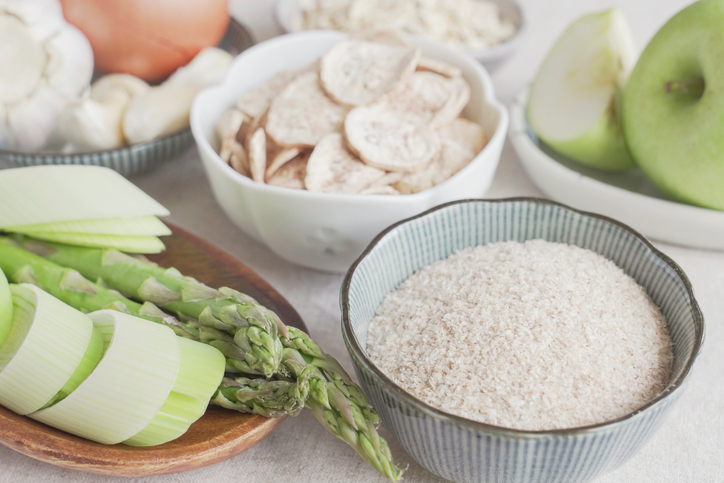Digestive Health Part 3: Resistant Starch

This is the third post in this four-part series on digestive health. In the second post you learned about three types of dietary fiber—soluble, insoluble, and prebiotic—and how they can enhance overall health and digestion. Today I’ll share a unique type of dietary starch that acts like fiber to support not only digestive health, but also healthy blood sugar and a controlled appetite.
The most common type of carbohydrate in the diet is starch. Examples include rice, pasta, cereal, bread, oats, and potatoes.
Resistant starch is a type of starch that resists digestion in the small intestine and ferments in the large intestine, serving as food for good bacteria. In this way it acts just like prebiotic fiber.
Potential benefits of resistant starch:
- Improved digestion and overall gut health due to more beneficial bacteria
- Improved insulin sensitivity and healthier blood sugar levels
- Increased feelings of fullness
- Lower undesirable LDL cholesterol
- Prevention of constipation
Foods high in resistant starch fall under these Fx Pillars:
Pillar 2: Eat the rainbow, at least one fruit and two vegetables every day
Pillar 4: Pick your protein: choose plant over fish over fowl over beef
Pillar 5: Choose whole grains, preferably sprouted
The specific foods include:
- Plantains
- Green bananas
- Raw oats
- Dried beans, peas, and lentils that have been cooked and cooled
- Cooked and cooled rice, oats, barley, potatoes
Research shows that reheating cooked and cooled grains, beans, and potatoes doesn’t decrease the amount of resistant starch in these foods.
Food for thought …
A simple way to enjoy the benefits of resistant starch—whip up a batch of overnight oats tonight and enjoy for breakfast tomorrow!


